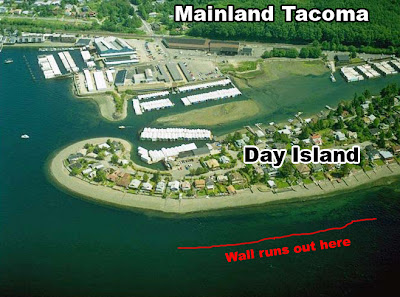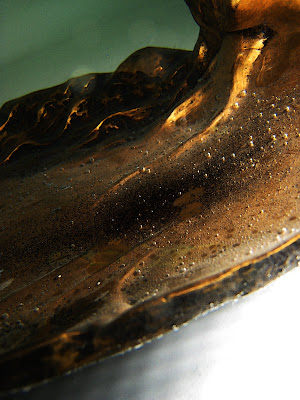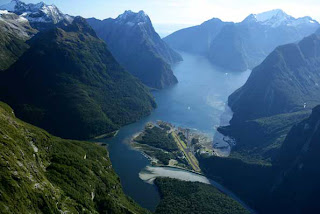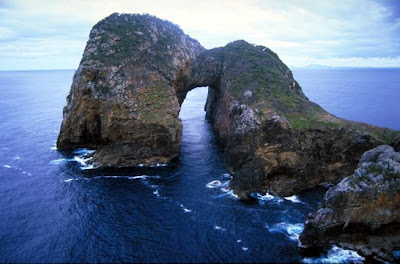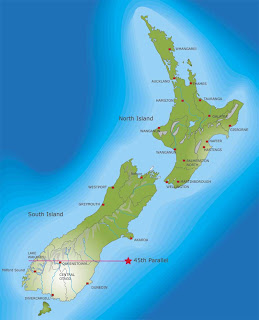Covers: Dives 5-10
There is quite a lot to catch up on, so we will see if I can fit everything I would like to into just this post. Since my last entry I have completed 6 more dives along with my PADI Advanced Open Water (AOW) certification. The AOW course has a lot of controversy surrounding it within the dive community as it is not really intended for advanced divers, but rather divers that are less experienced and looking to gain experience in other areas such as deep and night diving. Most divers who have been diving for years already have plenty of exposure to these types of dives and stand to gain little from the course. However, as well all know, I fit into the first category so I feel quite justified having taken the AOW course.
12/8/07 - Our first dive was in a new are by Alki called the Junkpile, down to about 20 feet for 40 minutes. This site is not a cove, like I had been accustomed to, and is actually exposed to some very heavy currents. This dive was the first time I had tried out my new gear (particularly my new Semidry) and I definitely found it much warmer. My hangover kind of negated this warmth, but oh well... The visibility however, was extremely poor based on the unprecedented rainfall we had earlier on in the week. On this particular dive it was somewhere in between 6-8 feet. Throughout the dive, we worked on peak performance buoyancy, which included some relatively simple tasks such as hovering and making controlled ascents/descents using only our BCD (no kicking or shooting the surface). After this dive, Cory, the instructor, decided that the current was moving too fast and surfacer waves were too large to do another dive. So.... you guessed it; we went back over to cove 1.
The second dive of the day was down to 22 feet for 45 minutes and, despite the fact that we were now in a cove, somehow the visibility was even worse at less than 4 feet. We literally descended as a group and had to immediately resurface because with the silt that had come up no one could see each other. We descended again by holding each other and quickly moved away from the descent area to maximize viz. Our focus on this dive was measuring our speed (how far we travel in a given number of kick cycles), followed by some more practice with compass navigation, in which we had to navigate certain shapes in the water using only our compass. The low visibility really added to this task as no one could "cheat" by getting lost and looking around for where they were going. If you got lost, its up to the surface for you.
12-9-07 - On the second day, we did our first dives off of a boat, which was pretty fun (especially coming back into the warmth after the first dive). Our first dive of the day was our deep dive, down to 74 feet for 27 minutes at a site called Shilshole Barges. I was extremely excited for this dive to take place as it was my first deep dive (technically defined as below 60 ft) and not only that, but we were diving on a barge wreck. This barge had sunk in a storm or something and sunk to land on its side. Cory told us before we descended not to worry as most skills, such as buoyancy control and equalization, actually got easier with depth. Here is a picture of me immediately before our descent:

We started down the descent line, which seemed to go on forever. After probably a minute or so, I finally saw the bottom and executed a landing with as little silt disturbance as possible. At this point, visibility was at about 15 feet but it was so dark that we were forced to stay close to the instructors light. As we set off from the descent line, I began to wonder where the barge was and then, after no more than 30 feet, I noticed what looked to be snow in the water ahead. Thousands of tiny white blotches covered the extent of my vision. As I drew nearer, I noticed that these white blotches were plumose anemones attached to the barge, which rose as an immense metal wall in front of us. This barge was literally so big that you could not see the top. We began swimming around the barge and saw quite an array of life, including my first Lingcod, a kind of fish that can grow as large as a small shark (this one was easily 4.5 feet long). After circumnavigating the boat, we began our ascent back up the line to the boat. I have to say ascents are probably my favorite part, not because of the fact that I want to get out of the water, but because of how good the backwards equalization feels. As much as equalizing going down can be a pain, equalizing on the way up is an experience I find quite enjoyable (kind of like getting tickled inside your ears or enjoying a satisfying sneeze). This was also my first safety stop and it was pretty crowded fitting 8 people at a depth of 15 feet on one ascent line. After about a minute we found ourselves falling, which was very confusing as my hand was still firmly grasping the line (which meant somehow the line was falling). We ascended back up to 15 feet and discovered that our weight had actually pulled the boat from where it had casually drifted to back immediately overhead our position. Upon surfacing, we removed our gear and piled inside for a much welcomed lunch of chicken noodle soup, sliced bread, and cheddar cheese. I especially enjoyed the lunch as one of only 3 omnivores in our group. Vegetarians were bound to the bread and cheese. Our operator, Howie (the guy driving the boat), decided to make up for this oversight by offering hot tea. I failed to see how this made up for a missing course, but apparently most people were happy with it.
Our second dive of the day took place at the West Seattle Reef and focused on our Underwater Naturalist Specialty (basically go look for animals). This was yet another first as it was the first time we would be diving in buddy teams without the watchful eye of our instructor (who would remain on the boat). Will and I began our descent along a mooring line and when we hit the bottom, I took a compass heading and we took off over the reef. It was an amazing experience to swim literally in the reef, as their were cracks between the rocks so swim through. Also, as each reef rose and fell easily 20 feet, it was kind of like being on a weightless roller coaster followed by a skydive at the end. We would go up the reef examining the life and break over the top swim out a little into space and then fall back down to the sea floor (of course regaining buoyancy before we actually hit it). We eventually found a line on the bottom, which we followed for awhile to yet more reef clusters. After hitting approximately 150 psi, I began to navigate us back, first using the line and then a reciprocal compass heading. When we had arrived at the point that I expected the mooring line to be, it was nowhere in sight. We probably should have looked for it a little harder, but instead we decided to try our first free ascent. Carefully watching my depth gauge I put a little spurt of air into my BCD and began to rise. Upon reaching 15 feet, we established neutral buoyancy for our safety stop. This was probably the most challenging part as its not easy to maintain a neutrally buoyant position with no reference above or below. Will said he watched his buoyancy through surface waves. Maybe if I had looked up like Will I could have used the waves as well. And maybe I would have noticed the fact that the boat was right on top of us. When ready to finish the ascent, I signaled to Will, who had apparently been trying to get my attention for a good 30 seconds to notify me that the boat was right over head. After swimming out from below it, we surfaced and low and behold, the ascent line is not 15 feet away. Shows how much visibility can affect a dive. End result of the dive was a max depth of 70 feet for 28 minutes.
12/13/07 - Sean offered to take Will and I alone on our final AOW dive requirement, the night dive. We stayed in Cove 2 for this dive as it was slightly familiar and had a lot of life at night. We descended to a good 60 feet and set out deeper, lights in hand searching for sines of life. At about 70 feet we saw a seal, which apparently was using our light as a means to find food. We also saw a ton of shrimp throughout the dive. As we continued deeper, I set a new max depth record, at 100 feet. I really shouldn't be focused on depth, but I was a little proud to break the big 100. The rest of the dive continued as usual and we did our safety stop on the bottom before surfacing at the shore. Dive time was 28 minutes (above the no deco limits using a standard table but we were using Sean's computer which took into account multilevel changes in on-gassing).
12/17/07 - This was the first dive I did completely outside the classroom environment. I decided to skip work today, so Will and I picked up a couple of tanks and headed for.... you guessed it, Cove 2. We dropped down on the 3rd buoy surrounding the no-dive water taxi DANGER area (haha) to 40 feet or so and swam for awhile within the 40-50 ft range. We saw some lingcod (smaller than the first), rockfish, and a few schools of fish of what looked to me to be Tang (but I dont know if we even have those here). After awhile, Will and I stumbled onto a wreck, which I recognized from my Wikipediaing the night before. The ship was called the "Honey Bear" and was an old Art Deco Cruiser. Apparently there is an 8 ft. male octopus inside, but it was really hard to see when we stuck our heads in, so we decided we would return later with lights. After a good amount of bottom time, we began a floor ascent with an unnecessary safety stop for good measure. We surfaced at the shore (not at all in the right place so we dove back down and swam at 4 feet for a bit). Total dive time was 44 minutes with a max depth of 48 feet. By the way, visibility was really excellent (from my limited experience) at about 25 feet.
In other dive news, Emory bought me a pretty sweet dive knife for Christmas. I'll strap it to my leg and look cool, but let's hope I never get tangled in anything to the point that I need to cut free. I also received the last part to my camera set. I ended up buying a Sea&Sea YS-60 TTL/N Strobe that used to be $580, but is now on factory closeout at about $135. The reason? It is engineered to only work with film cameras. However, I found a pretty cool piece of technology available from a German firm called HeinrichsWeikamp that makes an adapter used to hook up old Nikonos strobes to digital cameras. I was pretty psyched as the whole packaged costed me around $280. I just got the adapter tonight and tested it. All works fine!
